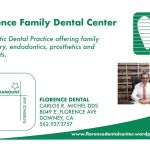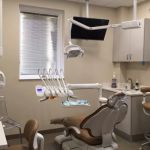Dental Treatment Options for People with Dental Phobia
- 1. Understanding Dental Phobia
- 2. Common Symptoms of Dental Phobia
- 3. The Impact of Dental Phobia on Oral Health
- 4. Dental Treatment Options for Phobic Patients
- 5. Overcoming Dental Fear Through Therapy
- 6. How to Find Support for Dental Phobia
1. Understanding Dental Phobia
Dental phobia is a very real and common issue for many people. As someone who has experienced dental anxiety firsthand, I can tell you that the fear of going to the dentist can be overwhelming. Dental phobia goes beyond just a dislike of dental visits; it’s an intense fear that prevents individuals from seeking necessary dental care. In my case, this fear manifested in nervousness just thinking about an appointment, leading me to delay or cancel visits entirely.
What makes dental phobia particularly challenging is that it’s not something that can be simply “overcome” through willpower. Many people who suffer from dental phobia avoid dental visits for years, which can lead to more severe dental issues down the line. Understanding dental phobia and its impact is the first step in finding the right treatment options for those who are affected. If you or someone you know is struggling with dental anxiety, this article will guide you through understanding your options and how to find relief.
2. Common Symptoms of Dental Phobia
Dental phobia can manifest in different ways, and recognizing the symptoms can help in managing the condition. Personally, I experienced a variety of symptoms when faced with a dental appointment, and I realized that I was not alone in feeling this way. Here are some of the most common symptoms of dental phobia:
1. Severe Anxiety or Panic Attacks
One of the most noticeable symptoms of dental phobia is the overwhelming sense of anxiety or fear before an appointment. The thought of sitting in the dentist's chair can trigger panic attacks for some individuals. In my case, just the smell of the office or the sound of the dental instruments was enough to send my heart racing. It’s not just “nervousness”; it’s a deep sense of dread that makes going to the dentist feel unbearable.
2. Physical Symptoms
Along with emotional distress, dental phobia can also manifest physically. This includes sweating, shaking, increased heart rate, and even nausea. I remember one time feeling nauseous and lightheaded in the waiting room before my appointment. It wasn’t just a fear of pain but a feeling of being completely out of control.
3. Avoidance Behaviors
People with dental phobia often go to great lengths to avoid the dentist. This could mean canceling or rescheduling appointments multiple times, as well as avoiding necessary treatments altogether. In my case, I postponed dental appointments for months, leading to even worse dental problems, which only added to my anxiety.
3. The Impact of Dental Phobia on Oral Health
The impact of dental phobia goes beyond just missed appointments. Over time, avoiding dental visits can lead to serious oral health problems. When I eventually sought dental care, I realized the toll that years of avoidance had taken on my teeth and gums. Common issues associated with dental phobia include untreated cavities, gum disease, and even tooth loss.
1. Tooth Decay
One of the most common problems is tooth decay. When regular cleanings and checkups are avoided, cavities can go unnoticed and untreated, leading to more severe decay. Unfortunately, I was in this position, where cavities that could have been prevented became larger and more painful, requiring expensive treatments later on.
2. Gum Disease
Another consequence of avoiding the dentist is gum disease. Without regular professional cleanings, plaque builds up, leading to gingivitis and, if untreated, more severe periodontal disease. It wasn’t until my gums became red, swollen, and started to bleed that I finally sought treatment, and by then, it was much harder to treat the condition.
3. Increased Treatment Costs
When dental phobia leads to delaying treatment, the cost of care can escalate. What could have been a simple cleaning and filling became a much more complex procedure requiring root canals, crowns, or even tooth extraction. The emotional and financial costs can be overwhelming, which only deepens the cycle of avoidance and fear.
4. Dental Treatment Options for Phobic Patients
Fortunately, there are several dental treatment options available for people who suffer from dental phobia. When I first sought help for my own anxiety, I was surprised at how many options there were to make the experience more comfortable. Here are some treatment options that can help:
1. Sedation Dentistry
One of the most common options for phobic patients is sedation dentistry. This involves using medication to help patients relax during dental procedures. There are different types of sedation, ranging from nitrous oxide (laughing gas) to oral sedatives and even intravenous (IV) sedation. For me, nitrous oxide made a huge difference in easing my anxiety, allowing me to go through the procedure without feeling overwhelmed by fear.
2. General Anesthesia
In more severe cases, general anesthesia may be an option. This is especially beneficial for patients who need extensive dental work but cannot tolerate even mild sedation. Under general anesthesia, you will be fully asleep during the procedure, which can eliminate the fear and stress entirely. I’ve heard of patients who’ve used this method for complex procedures, finding it to be a life-changing experience.
3. Behavioral Therapy
Behavioral therapy, such as cognitive behavioral therapy (CBT), can also be an effective way to manage dental phobia. This type of therapy helps patients address and change the negative thoughts and behaviors that contribute to their fear. I personally found therapy to be helpful in reducing my anxiety long-term, as it provided me with tools to manage fear not just during dental visits but in other areas of my life as well.
4. Desensitization Techniques
For some patients, desensitization techniques are used to gradually expose them to the dental environment in a controlled way. This may involve visiting the dental office multiple times before undergoing any procedures, allowing the patient to get comfortable with the setting. For me, just getting used to sitting in the dental chair for a few minutes without any work being done helped reduce my anxiety over time.
5. Overcoming Dental Fear Through Therapy
For those of us with dental phobia, overcoming the fear can take time and patience. Therapy and behavioral approaches can be incredibly effective. In my case, after years of avoiding dental visits, I finally decided to seek professional help. With the guidance of a dentist who specialized in treating dental phobia, I was able to make gradual progress.
Cognitive-behavioral therapy, combined with relaxation techniques such as deep breathing and guided imagery, allowed me to manage my fear and take small steps toward overcoming it. The key was understanding that my fear, though real, didn’t have to control my life or my health. Therapy helped me learn to reframe my negative thoughts about dental visits, which made each appointment a little less daunting.
6. How to Find Support for Dental Phobia
If you’re struggling with dental phobia, it’s important to know that you’re not alone. There are many resources available to help you find support, including specialized dental clinics, therapists, and online communities. I personally found that finding the right dentist who understood my fears made a huge difference. Look for a dentist who specializes in treating patients with dental anxiety and offers sedation options. Many dental offices now promote a calming environment, complete with comforting music, aromatherapy, and patient-centered care practices.
Additionally, support groups and online forums can connect you with others who understand your fear and offer advice on how to cope. The more information and support you can gather, the more empowered you’ll feel to take control of your dental health.
If you’re ready to overcome your dental phobia, I highly recommend checking out Dentistry Toothtruth for more resources and information on how to find the best care for your needs.







 Dr. William G. Gardner, DDS4.0 (12 review)
Dr. William G. Gardner, DDS4.0 (12 review) Florence Family Dental Center: Michel, Carlos R DDS4.0 (13 review)
Florence Family Dental Center: Michel, Carlos R DDS4.0 (13 review) Pinnacle Dental Group - Plainfield, IL (Implant, Cosmetic, and General Dentistry)4.0 (264 review)
Pinnacle Dental Group - Plainfield, IL (Implant, Cosmetic, and General Dentistry)4.0 (264 review) The Dentists, LLC5.0 (180 review)
The Dentists, LLC5.0 (180 review) Kids Dental Land4.0 (602 review)
Kids Dental Land4.0 (602 review) Smiles of Carpentersville3.0 (26 review)
Smiles of Carpentersville3.0 (26 review) The Importance of Oral Health Education During Pregnancy for a Healthy Pregnancy
The Importance of Oral Health Education During Pregnancy for a Healthy Pregnancy Best Tips for Brushing Your Teeth Properly for Healthy Gums: Essential Techniques for Oral Health
Best Tips for Brushing Your Teeth Properly for Healthy Gums: Essential Techniques for Oral Health Why Skipping Dental Checkups Can Lead to Bigger Oral Health Problems
Why Skipping Dental Checkups Can Lead to Bigger Oral Health Problems Advantages of Porcelain Dental Restorations
Advantages of Porcelain Dental Restorations How Can Diabetes Cause Tooth and Gum Problems? Preventing and Managing Oral Health Issues
How Can Diabetes Cause Tooth and Gum Problems? Preventing and Managing Oral Health Issues Healthy Habits for Promoting Good Oral Health and Hygiene: Tips for a Healthy Smile
Healthy Habits for Promoting Good Oral Health and Hygiene: Tips for a Healthy Smile